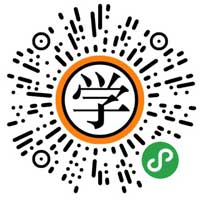- ��ҳ|
- ����|
- ����|
- ����|
- ͳ��|
- ����|
- ���|
- �˹�����|
- ��ѧ|
- ����|
- ����|
- ��ѧ|
- רҵ|
- Ͷ��|
- ����|
- �ڿ�|
- ������|
- ��ҵ����|
- ��ҵ����|
- �г�Ӫ��|
- ������Դ|
- ����ó��|
��ȷ�������˿���ϵͳ��һ���������Ʒ����о�_�Զ���רҵ����
����ʱ�䣺2014-05-21
��Դ���˴���̳
�Զ���רҵ���ķ���
Ŀ ¼
ժ ҪI
AbstractII
��1�� ����1
1.1 �����������1
1.1.1�����˷�չ��ʷ���Զ�����2
1.1.2�������������3
1.2 ������³�����Ʒ�������4
1.2.1³�����Ʒ���4
1.2.2�������Ի�����5
1.2.3��ṹ���Ʒ���5
1.3 ������6
��2�� Ԥ��֪ʶ7
2.1 ��ѧ֪ʶ7
2.2 ����֪ʶ9
2.2.1����ĸ���9
2.2.2 MATLAB���Լ��10
2.3 �����˵���ѧģ��10
2.4 �����˷���ģ�͵Ľ���12
2.5 ������14
��3�� �����˵�λ������15
3.1 �����15
3.1.1ƽ���ƶ�15
3.1.2��ת17
3.1.3��α任18
3.2 �˶�ѧ��������19
3.3 �˶�ѧ��������21
3.4 �ſɱȾ���23
3.5 ������27
������ �����˵Ķ���ѧģ��28
4.1 ����ţ�ٶ��ɽ��������˶���ѧģ��28
4.1.1������ƽ���Ķ���ѧģ��28
4.1.2������ת���Ķ���ѧģ��30
4.2 �����������շ��̽��������˶���ѧģ��31
4.3 �����ɶȻ����˵Ķ���ѧģ��32
4.4 ������36
������ Ӧ�ü�������ؽṹ�Ŀ��Ʋ���37
5.1 �������صĻ���˼��37
5.2 ���Ա��ģ�͵ļ������ؿ���38
5.2.1������38
5.3 �������صIJ������ƽṹ39
5.3.1��ȷ����Լ��������֪41
5.3.2��ȷ����Լ������δ֪45
5.4 ������47
����48
�����49
��л51
��¼152
��¼256
��¼361
��¼470
ժ Ҫ
�����˵Ŀ����������������۽绹�ǹ��̽������һֱ�������ǹ�ע��������֪����������һ��ʮ�ָ��ӵĶ���������������ϵͳ��������ʱ�䡢ǿ��ͷ����ԵĶ���ѧ�ص㣬������п���Ҳ��ʮ�ָ��ӵģ����DZ�����Ի����˴�����ȷ�������صĴ��ڡ��ڻ����˵ĸ��ֿ����㷨�У�����ģ�͵ļ������ؿ��Ʒ�����ʮ����Ч�ģ��������Ҳ�Ǻ�ǿ�ġ�Ȼ�������ֿ����㷨���������������⣬��һ������ʵ�ֶԻ����˶���ѧģ�͵Ŀ��ټ��㣻�ڶ����������Ⱦ�ȷ��������˵Ķ���ѧģ�ͣ���Ϊ���������㷨��ģ��δ֪�������³���Խϲ����ʵ���У���ʹ���һ����Ϊ����Ļ����˶���ѧģ��Ҳ�Ǻ����ѵģ��ο��ڲ��������л����˶���ѧģ�͵ĸ����������ܷ����仯��ͬʱ���ܵ��������ź��ر仯�����ȷ�������ص�Ӱ�졣
�������Ծ�����������ѧģ�͵Ļ�����ϵͳ������ȷ���Ի�����ϵͳΪ�о����������е��������ϣ��ص�̽�ֻ��ڼ��������㷨�IJ������Ʋ��ԡ�
�������Ƚ����˻����˵ķ�չ���ۺͻ����˿������۸ſ���Ȼ��Լ������ؿ����㷨�Ļ���˼�����Ҫ�ص�����ϸ�IJ�����������̽���˻��ڼ������ؽṹ�IJ�ȷ�������˵IJ��������㷨������˼�붼�ǽ���ȷ���Ի�����ϵͳ�ֽ�ɱ��ϵͳ�Ͳ�ȷ��ϵͳ�����ڱ��ϵͳ�����ü������ؿ��ƣ����ڲ�ȷ��ϵͳ�����û�����ϵͳ�Ļع������в�ȷ�����Ͻ�İ��纯������Ʋ�ͬ�IJ���������������������������������˵������������Ϊ����������ϵͳ�����룬ʹ�û����˱ջ�ϵͳ�ܹ�ʵ��ȫ��һ������н硢�����ȶ���ָ���ȶ������Զ����ɶȴ��������˽�����MATLAB���棬����S-Function��д����֤��������Ч�ԺͿ����ԡ�
�ؼ��ʡ���ȷ�������ˣ��������ؿ��ƣ�³�����ƣ������˶���ѧ��MATLAB/imulion��S-Function����
Abstract
The control problems of robotic manipulators have received great attention in theoretical research and engineering for many years. It is well known that the robotic manipulator is a very complicated MIMO nonlinear system with time-varying strong-coupling and nonlinear dynamic characteristics, so the control for such a system is quite difficult, we have to face a lot of uncertainties. The model-based scheme popularly known as Computed Torque Control (CTC) is effective and its performance is excellent in various control strategies for robotic manipulator. However, the requirements for successfully implementing CTC are fast computation and perfect knowledge of dynamic model.. because CTC is not robust enough in uncertain model. In practice, unfortunately, it is impossible to obtain a prefect, or even reasonably accurate dynamic model of a robotic manipulator. Furthermore, the parameters of dynamics model of robotic manipulators may also be subject to change when the manipulator goes about its task. Meanwhile, the system can be influenced by uncertainties such as external disturbance and payload change.
In this dissertation, the system of robotic manipulator with entire dynamic model namely, the robotic system with uncertainties is regarded as controlled plant and the various compensation schemes based CTC are developed on base of references available.
The dissertation gives a brief description about the developing situation and control theory of robot firstly, and then the underlying idea and characteristic of CTC are introduced in detail. Subsequently discussed control strategies with compensation control structure which are based on CTC are proposed. The overall idea is that the system of robotic manipulators is decomposed as two parts: one is nominal system with perfect knowledge of dynamic model and the other is system with uncertainties. CTC is used to control nominal system. For uncertainties system, we utilize the regress of robotic system or bounding function on uncertainties to design different compensation controllers. The inputs of the two parts control the robotic systems together. These proposed control algorithms ensure Global Universe Ultimate Boundness Stability, Global Asymptotic Stability and Global Exponential Stability of the whole robotic system. The simulation results are presented for the same 2-DOF serial robotic manipulator in MATLAB, Use s-Function compiled programs, which validate the effectiveness and feasibility of the proposed schemes.
Keywords��robotic manipulators with uncertainties; computed torque control; robust adaptive control; Robotic kinematics; MATLAB/ Simulation; S-Function
����֮�ҡ�ѧ���ᡱС����
- ɨ����롰����ѧϰ�ʼ�Ⱥ��

�Ƽ��Ķ�
���ѧ˶ʿ������ר˶�������Ѷ�����[��ǰ������]
��Ҫ˵���۾���ѧ���۾���ѧ����������ϵ
����ѧ�İ˴��ҵ����+����ѧ��ҵ����
ʷ����ȫ���й�������ѯ��˾������318�ң�
ͳ��ѧ����ԺУ����
����֮�Ҿ��������Ƽ�
- �������ӣ�
- ���ݷ�����ѵ|
- ���ݷ���ʦ|
- ����ѧ|
- ����ѧ|


